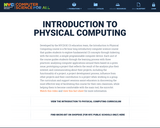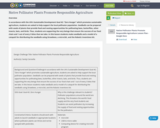
Diving into Pool Safety: A STEM Design Challenge using the Micro:bit
- Subject:
- Computer Science
- Engineering
- Material Type:
- Activity/Lab
- Author:
- Kimberly Herskowitz
- Lauren Beal
- Rachael Haverstick
- Date Added:
- 07/16/2020

Diving into Pool Safety: A STEM Design Challenge using the Micro:bit

This resource is an activity to simulate the capture recapture method used by biologist to estimate the size of a population.

Project lesson plan involving detecting floating marine debris. Connections to the oceans' garbage patches. Resource using Micro:bit and extension equipment to wire devices and Microsoft Makecode to code the Micro:bit to perform processes. Engineering Design Process is used to design a floating platform to hold and protect all equipment from water while it performs its functions.

Developed by the NYCDOE CS education team, the Introduction to Physical Computing course is a 54-hour long introductory computer science course that guides students to explore fundamental CS concepts through tinkering with the micro:bit, a simple programmable computer device. Each unit of the course guides students through the learning process with three practices: analyzing computer applications around them based on a given issue; prototyping a project that reflects the result of the analysis plus their interest; and communicating about their projects, including the functionality of a project, a project development process, influence from other projects and their contribution to a project when working in a group. The curriculum and support sessions assist educators in discovering the most effective way of facilitating this course for their own classroom, while helping them to become comfortable with the main tool, the micro:bit.

In accordance with the UN’s Sustainable Development Goal #2: “Zero Hunger” which promotes sustainable agriculture, students are asked to help support the local pollinator population. Seedballs can be prepared with seeds of plants that provide food and nesting opportunities for pollinating bees, butterflies, other insects, bats, and birds. Thus, students are supporting the very beings that ensure the success of our food chain and 1 out of every 3 bites that we take. In this lesson students make seedballs and a model of a catapult for distributing the seedballs using Strawbees, a micro:bit, and the Robotic Inventions kit.